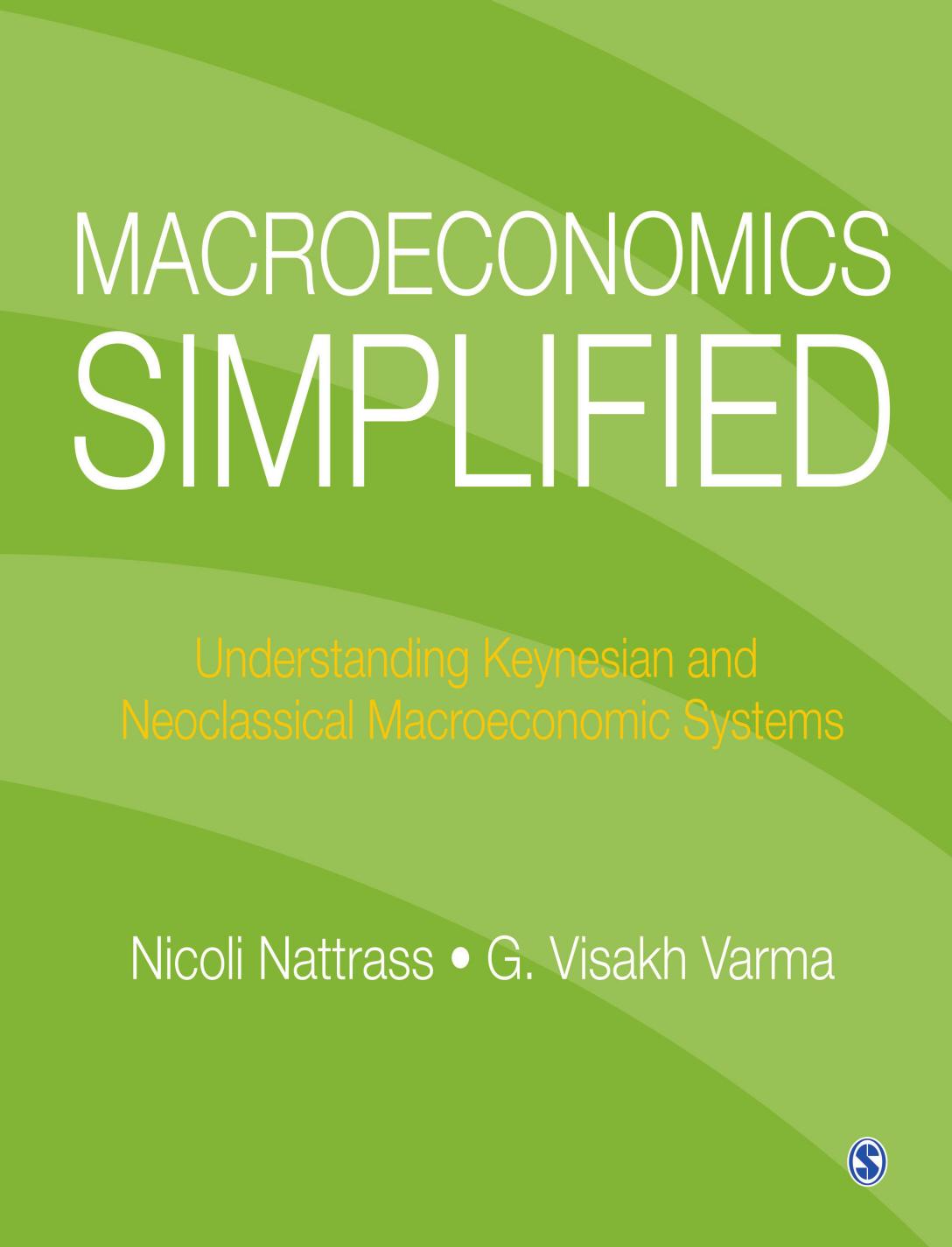Macroeconomics Simplified Understanding Keynesian and Neoclassical Macroeconomic Systems 1st edition by Nicoli Nattrass, Visakh Varma ISBN 9351507970 9789351507970
$70.00 Original price was: $70.00.$35.00Current price is: $35.00.
Instant download Macroeconomics Simplified Understanding Keynesian and Neoclassical Macroeconomic Systems after payment
Macroeconomics Simplified Understanding Keynesian and Neoclassical Macroeconomic Systems 1st edition by Nicoli Nattrass, Visakh Varma – Ebook PDF Instant Download/Delivery: 9351507970, 9789351507970
Full download Macroeconomics Simplified Understanding Keynesian and Neoclassical Macroeconomic Systems 1st edition after payment

Product details:
ISBN 10: 9351507970
ISBN 13: 9789351507970
Author: Nicoli Nattrass, Visakh Varma
Macroeconomics Simplified explains the intuition behind Keynesian and neoclassical macroeconomics using graphs and simple algebra.
It provides students with a strong conceptual basis for understanding the tension between Keynesian and neoclassical systems that has once again came to the forefront since the 2007–08 financial crisis.
The book shows how theoretical perspectives affect macroeconomic policy choices and proposes a pragmatic approach to policy that is sensitive to prevailing economic conditions. Students of economics and business alike will enjoy its concise and engaging analysis and find the applications and references to the Indian economy helpful.
Macroeconomics Simplified Understanding Keynesian and Neoclassical Macroeconomic Systems 1st Table of contents:
Macroeconomics Summary
This textbook covers various macroeconomic models and theories.
Part 1: Foundations (Chapters 1-3):
Chapter 1 introduces the subject, highlighting technical and ideological considerations.
Chapter 2 details national accounts, key macroeconomic aggregates (GDP, GNP), their distinctions, and relationship to economic development and welfare.
Chapter 3 introduces the neoclassical macro model, focusing on the classical dichotomy, labor market equilibrium, aggregate supply, and the quantity theory of money. It also surveys new classical business cycle analyses.
Part 2: Keynesian Perspectives (Chapters 4-6):
Chapter 4 explores the Keynesian model, emphasizing effective demand, the Keynesian cross, and the influence of Keynes’s General Theory.
Chapter 5 examines investment and interest rates, including bond pricing, inflation’s effect, and interest rate structures.
Chapter 6 builds on the Keynesian framework with the IS-LM model, describing the goods market (IS curve), money market (LM curve), and their interaction. It analyzes the effects of government and financial markets.
Part 3: Policy and Open Economies (Chapters 7-9):
Chapter 7 delves into fiscal and monetary policies within the IS-LM framework, comparing Keynesian and neoclassical approaches.
Chapter 8 presents the Aggregate Supply and Demand (AS-AD) model, contrasting Keynesian and neoclassical perspectives, examining equilibrium, and discussing the Phillips Curve, unemployment, and expectations.
Chapter 9 extends the analysis to open economies, covering exchange rate determination, fixed/flexible exchange rates, the open economy IS-LM model, and the balance of payments, examining purchasing power parity and the impact of external shocks.
Part 4: Crisis and Context (Chapter 10):
Chapter 10 provides an epilogue, focusing on the role of credit and crises, drawing upon insights from economists like Joseph Schumpeter and Hyman Minsky.
People also search for Macroeconomics Simplified Understanding Keynesian and Neoclassical Macroeconomic Systems 1st:
macroeconomics simplified
macroeconomics simple
macroeconomics understanding the circular flow of the macroeconomy
macroeconomics simple definition
macroeconomics understanding the market system
Tags:
Nicoli Nattrass,Visakh Varma,Macroeconomics Simplified,Neoclassical Macroeconomic


